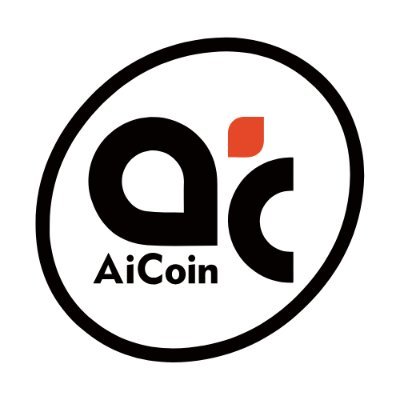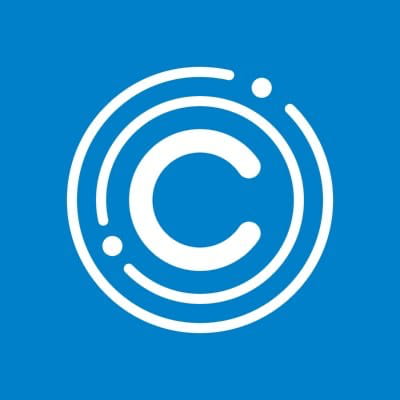Blackrock Supercharges Spot Crypto Funds With Anchorage Digital Integration
Anchorage Digital announced on April 8 that it has been selected as the newest digital asset service provider for Blackrock, marking a significant expansion of its existing relationship with the world’s largest asset manager. The announcement comes as demand for digital asset custody continues to surge among both institutional and retail investors. The announcement details:
Blackrock now gains access to digital asset custody, staking, settlement, and on-chain governance from Anchorage Digital Bank, the only U.S. federally chartered bank in crypto.
Blackrock added Anchorage as a new custodian for its spot cryptocurrency exchange-traded products (ETPs) and additional crypto-related investment vehicles. This integration follows a formal assessment of Anchorage’s capabilities.
Commenting on the partnership, Blackrock’s Head of Digital Assets, Robert Mitchnick, explained:
As demand for digital asset products increases, and as our footprint in the ecosystem grows, we continue to expand our network of service providers with a focus on the highest quality institutional providers.
“After a thorough evaluation, Anchorage Digital clearly meets these standards, and we are excited to be expanding our network of eligible digital asset service providers with the addition of Anchorage Digital,” the executive added.
The partnership broadens Anchorage Digital’s role beyond its current support of the Blackrock USD Institutional Digital Liquidity Fund (BUIDL), now extending to encompass digital asset custody, staking, settlement, and on-chain governance services.
Nathan McCauley, Anchorage Digital’s CEO and co-founder, emphasized the broader implications: “As Blackrock continues to bridge digital assets and traditional finance, we are excited by the opportunity to set a new standard for tailored access to the digital asset class. By providing federally regulated crypto infrastructure, we are helping Blackrock to meet client demand for today and tomorrow. We are proud to build toward a world where every investor can get exposure to digital assets.” Anchorage Digital Bank offers regulated services such as bankruptcy-remote custody, offline private key storage, biometric authentication, and efficient digital asset settlement via low-latency architecture. The strengthened alliance positions both companies to respond to escalating investor interest in regulated crypto solutions.
免责声明:本文章仅代表作者个人观点,不代表本平台的立场和观点。本文章仅供信息分享,不构成对任何人的任何投资建议。用户与作者之间的任何争议,与本平台无关。如网页中刊载的文章或图片涉及侵权,请提供相关的权利证明和身份证明发送邮件到support@aicoin.com,本平台相关工作人员将会进行核查。
Zilliqa CEO steps down two months after X-Bridge exploit
Zilliqa CEO Matt Dyer steps down as the team focuses on delivering Zilliqa 2.0 following recent bridge recovery efforts.
Matt Dyer has stepped down as chief executive officer of Zilliqa Technology , the company announced, as the project moves toward a key transition to its upgraded Zilliqa 2.0 network.
Zilliqa announces with regret that Matt Dyer has stepped down from his role as Chief Executive Officer of Zilliqa Technology. We extend our gratitude for his contributions and wish him success in his future endeavours. During this interim period, internal leadership will oversee…
In an X post on Tuesday, the company said that during the interim period, “internal leadership will oversee daily operations as we progress toward the migration to Zilliqa 2.0.” The Zilliqa team didn’t specify the reason for the leadership change but said a “long-term strategy for the company’s leadership” will be shared after the network’s transition.
“We extend our gratitude for his contributions and wish him success in his future endeavours.”
Zilliqa
Dyer’s exit follows a difficult period for the company. In early February, Zilliqa identified a critical exploit on X-Bridge, a cross-chain bridge for transferring assets between BNB Chain and Ethereum . The exploit enabled the attacker to mint the Zilliqa-bridged versions of native currencies on Ethereum and BNB Chain without locking the corresponding amount of assets on these networks.
Zilliqa responded by shutting down the relayer, pausing token manager contracts, and deploying new zETH and zBNB contracts. While that incident didn’t crash the ZIL ( ZIL ) token price immediately, it still contributed to its decline, with the token now down over 90% from its 2021 all-time high, per data from crypto.news’ price tracking page.
Commenting on the latest transitionary move, the team said it remains focused on the network upgrade, adding that its “primary focus remains on the successful delivery of the enhanced Zilliqa 2.0 network, in alignment with our updated roadmap and timeline.”
Cardano Unveils Veridian, Letting You Own Your Digital Identity
The Cardano Foundation has officially launched Veridian, an open-source digital identity platform that is now available on iOS and Android. The platform aims to give users complete control over their digital identity, whether they are individuals or organizations.
Introduced alongside its first product, Veridian Wallet, the platform puts users in complete control of their digital presence, delivering verifiable credentials and robust data security.
Veridian enables the management of credentials and private keys directly from your phone, without having to rely on third-party services. This means that all control is in the hands of the user. Imagine if our ID cards, licenses, and even our education history could be stored securely in one place and only we could access or share them—that’s what Veridian offers.
Trust is becoming increasingly scarce in an increasingly digital world. Too many people are asked to “trust” systems they don’t even understand. Well, Veridian is trying to turn things around. With technologies like Key Event Receipt Infrastructure (KERI) and Authentic Chained Data Container (ACDC), Veridian ensures that user data can only be accessed authentically and securely.
Not only that, Cardano implements a post-quantum security approach to keep the platform relevant in the future. So, even if supercomputers start to run rampant, Veridian still has a shield.
Veridian is not just about digital credentials, but about building trust. This platform offers full transparency because its infrastructure is public-based and its protocols are open. If usually digital identity systems are built behind a dark and unauditable screen, Veridian is the opposite—it is bright and clear.
And when it comes to scalability, Cardano seems to know very well that big projects will be in vain if they cannot be used widely and efficiently. Therefore, Veridian is designed to be cost-effective and reliable, even by large institutions.
On the other hand, CNF previously reported that Cardano CEO Charles Hoskinson had revealed his ambitious plan to bridge Hydra—Cardano’s scaling solution—with the Bitcoin Lightning Network. The combination of the two technologies aims to create a trustless recursive bridge.
If successful, cross-blockchain transactions can be fast, cheap, and secure, without having to deal with slow traditional systems.
Furthermore, the Cardano Foundation has also established a strategic partnership with SERPRO, a Brazilian government-owned information technology company.
The collaboration, announced in March 2025, is focused on accelerating blockchain adoption in the public sector, especially in Brazil as the largest country in Latin America. Imagine if the entire government administration system could be accessed with a verified digital identity—it would certainly be much more practical and transparent.
Moving on to the market side, the activity of large investors, aka whales, on the Cardano network also shows something interesting. In January 2025, it was recorded that around 120 million ADA tokens were purchased since January 19, with an estimated value of close to $100 million. Historically, this amount of accumulation is often a sign of an impending price surge.
However, this does not mean that the increase will occur in the near future. Some analysts predict that ADA could still fall to around $0.50 before having the opportunity to soar to $3 this year.
Meanwhile, based on the latest data, the ADA token is trading at about $0.6545 with an increase of around 0.54% in the last 24 hours. Its daily transaction volume is also quite active, at about $808.98 million.

Aicoin-EN-Bitcoincom
2025/04/03 15:15
Nonco Launches FX Onchain Initiative on Avalanche, Aiming to Bridge Institutional FX Liquidity With Stablecoins
Nonco, an institutional digital asset trading firm, has launched its foreign exchange (FX) onchain initiative on the Avalanche network, aiming to bridge institutional FX liquidity with the stablecoin market. The FX Onchain protocol, built on Avalanche’s C-Chain, automates conversions between local currencies and USD-backed stablecoins, such as USDC and USDT, facilitating faster and more cost-effective global payments and cross-border transactions. By enhancing stablecoin liquidity onchain, Nonco seeks to create a more efficient FX market for institutions. The initiative addresses existing challenges in the FX space, including limited local exchange liquidity and high conversion costs, by connecting institutional FX liquidity providers with the Avalanche-based protocol. With backing from Vaneck and a commitment to redefining institutional FX liquidity, Nonco’s protocol is set to debut with trading pairs like USDMXN and expand to include USDBRL and EURUSD.
免责声明:本文章仅代表作者个人观点,不代表本平台的立场和观点。本文章仅供信息分享,不构成对任何人的任何投资建议。用户与作者之间的任何争议,与本平台无关。如网页中刊载的文章或图片涉及侵权,请提供相关的权利证明和身份证明发送邮件到support@aicoin.com,本平台相关工作人员将会进行核查。


 Prezzo più basso
Prezzo più basso Prezzo più alto
Prezzo più alto 









































